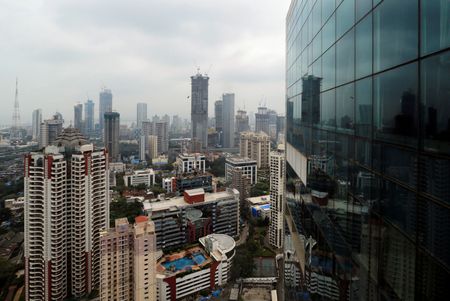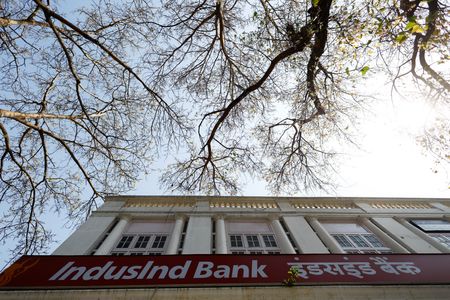By Dharamraj Dhutia
MUMBAI (Reuters) – The Indian rupee gave up early gains to end lower on Monday as concerns over steep tariffs on Indian goods spurred dollar demand, with importer bids adding pressure.
The currency closed 0.1% lower at 87.58, against its previous close of 87.53 in the previous session.
The local unit, which opened at 87.39, and hit day’s high of 87.3450, saw selling pressure through the day amid dollar-buy orders from importers.
“An additional 25% tariff is set to be enforced on August 27. This move will reduce Indian exports, widen the trade deficit, and add further stress to the rupee,” said Amit Pabari, managing director at CR Forex.
Indian goods face additional U.S. tariffs of up to 50% with effect from Wednesday. Washington had already levied 25% tariffs on Indian goods- steeper than those faced by many other large trade partners- and the latest slated increase comes in response to New Delhi’s continued purchases of Russian crude.
Signs that progress towards an Ukraine-Russia peace deal has stalled also reinforced expectations that the additional U.S. tariffs on Indian goods will be implemented, and any discussion may not bear fruit.
Sentiment for the local currency impacted after Fitch kept its long-term foreign-currency issuer default rating on India at ‘BBB-‘.
The currency gained in early part of the day after Federal Reserve Chair Jerome Powell hinted at a September rate cut, pushing U.S. yields and the dollar lower.
On Friday, Powell said that risks to the job market were rising but also noting inflation remained a threat and that a decision was not set in stone.
Traders are now pricing in nearly 90% odds of a quarter-point rate cut at the September 16-17 policy meeting, and a cumulative 48 basis points of reductions in 2025, according to LSEG data.
(Reporting by Dharamraj Dhutia; Editing by Nivedita Bhattacharjee)










